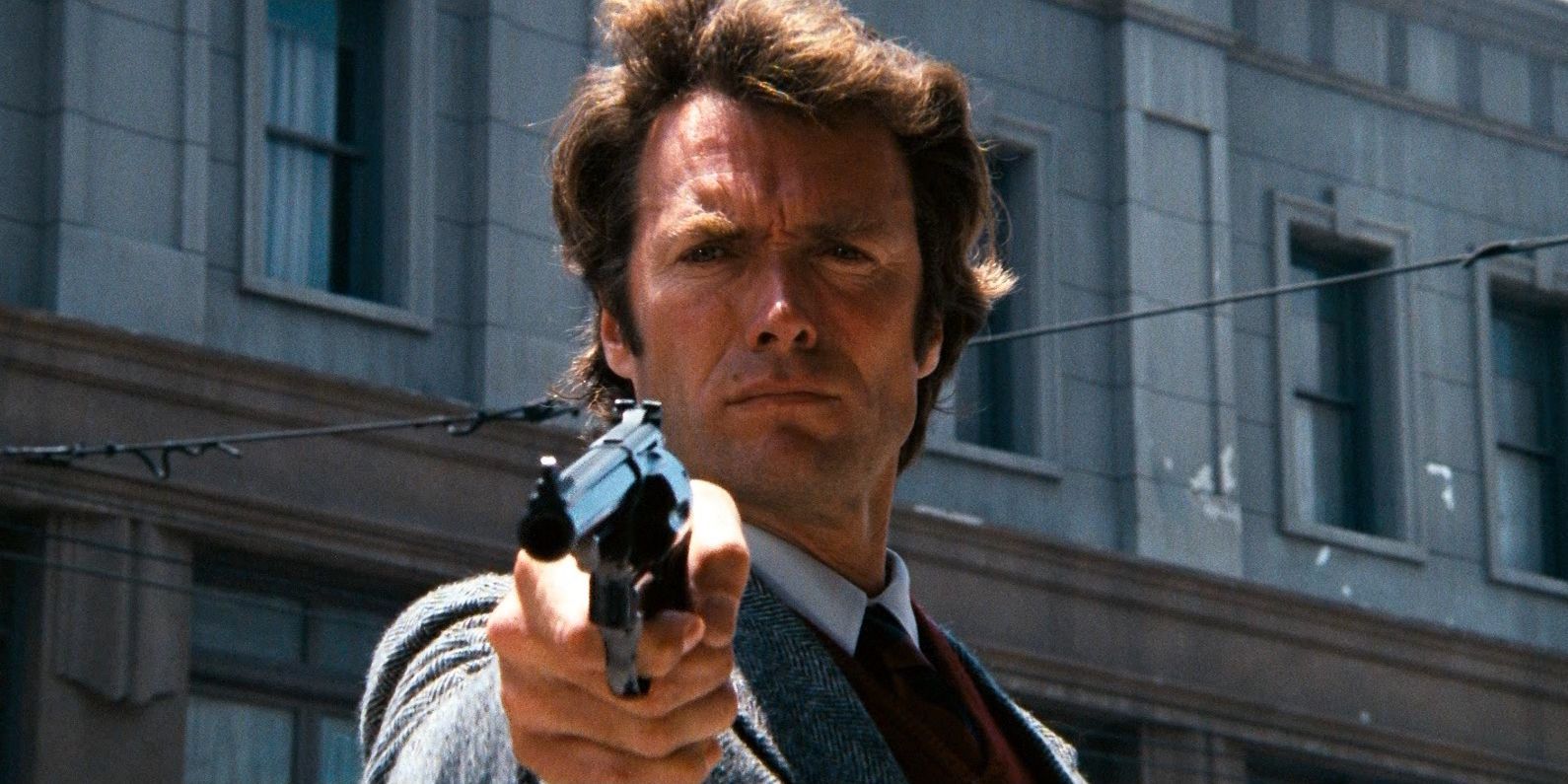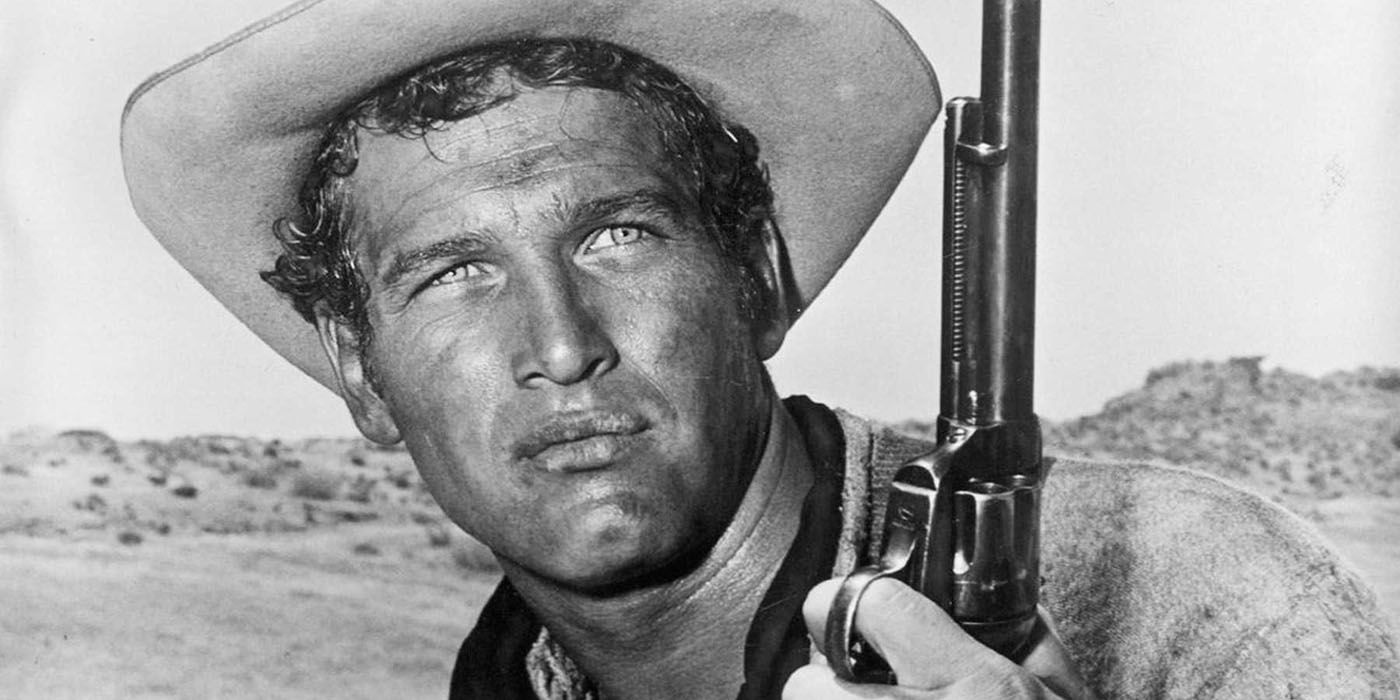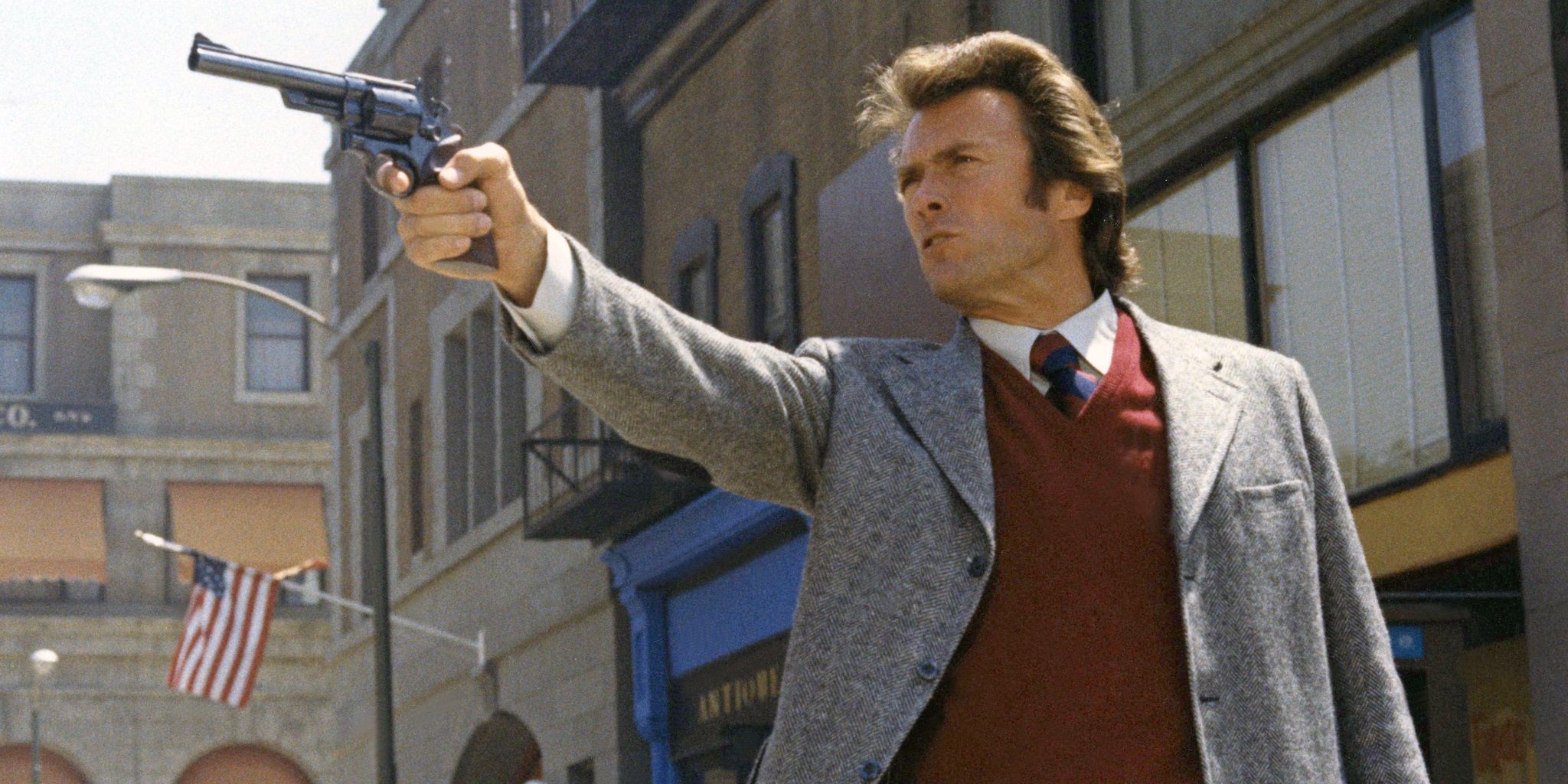Clint Eastwood
Tragic Details About Clint Eastwood’s Ex-Girlfriend

For some casual movie fans, little is known about Sondra Locke beyond her connection to Clint Eastwood, her long-term boyfriend and frequent collaborator. While she was busy putting together a strong career, which included earning an Academy Award nomination for her acting debut in The Heart Is a Lonely Hunter and directing four films, Eastwood loomed over many of her achievements. And her relationship with the For a Few Dollars More star (and all of the incredibly messy and complicated matters that came with it) was not the only difficult chapter of her life.
It seemed that at every step along the way, Locke was met by a new obstacle to deal with and a new challenge to overcome. In her quest to achieve great success in Tinsel Town, she found herself at odds against her family, the industry, and, yes, Eastwood. In the end, she led a rather remarkable life that should have stood out on its own. She endured threats to her career, her livelihood, and even her life, but Locke’s legacy remains shrouded by the larger-than-life persona and name of her former significant other. Here are some of the tragic details about Clint Eastwood’s ex-girlfriend, Sondra Locke.
Sondra Locke’s family wasn’t supportive
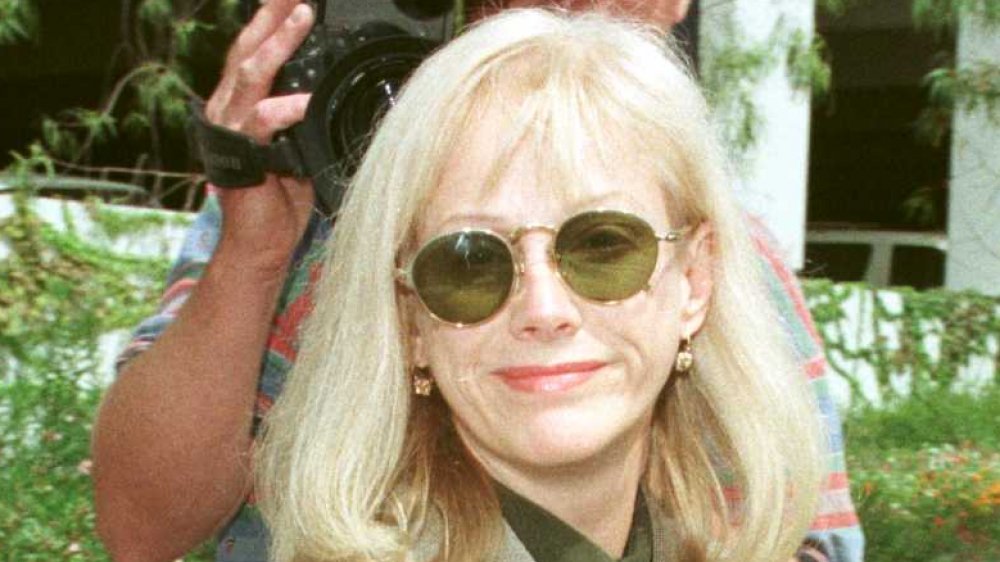
Sondra Locke was born in Tennessee as Sandra Smith. According to The Independent, her father was a soldier who was out of the picture before she was born. Her last name was later changed to that of her stepfather’s, Alfred Locke. She also took on the stage name, Sondra. As a young woman, Locke had dreams of becoming an actor, but her family dissuaded her.
In her autobiography, The Good, the Bad and the Very Ugly, Locke recalled a rift growing between her and her mother for years, and at 19 years old, a fight between them gave her the push she needed to leave. She remembered her mother telling her she could “pack your bags, girl, and get outta here” if she wasn’t up for doing as she was told. So, Locke did just that, and she never looked back.
Locke wrote in her book that, in nearly 30 years, she and her mother had “a handful of conversations and short visits.” Locke would never truly reconcile with her parents, but she had no regrets. “It made no sense for any of us to spend our lives pretending to have relationships that did not really exist,” she explained in the memoir. “And even though it is my nature to feel responsible and guilty, even when I’m not, remarkably I never felt that way about my decision to walk away from my parents’ home.”
Sandra Locke and her ‘Prince Charming’ didn’t last
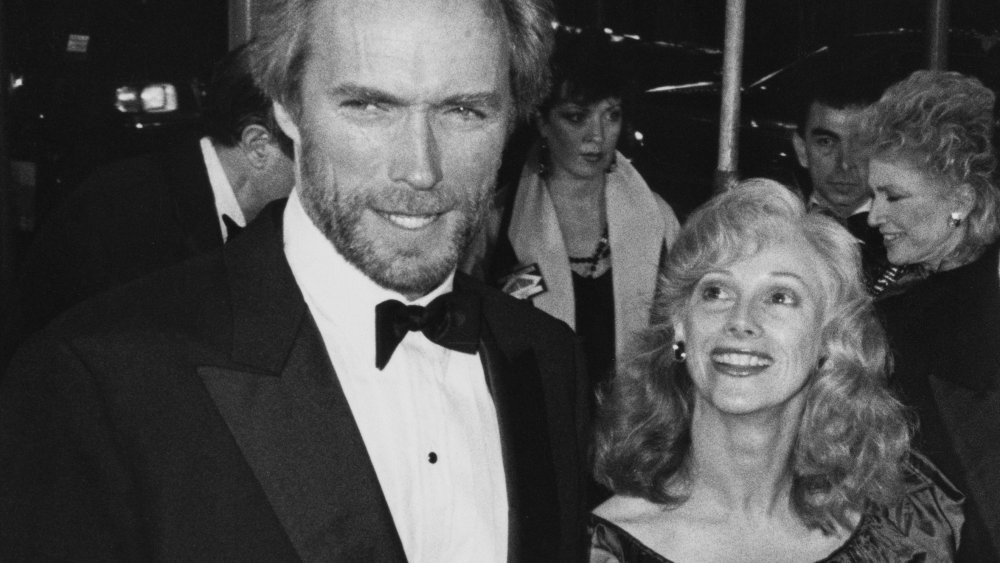
Sondra Locke met Clint Eastwood in 1975 while shooting The Outlaw Josey Wales. The two instantly fell in love. Locke embarked on a 14-year relationship with the man who, as the Los Angeles Times reported in 1996, she once believed was her “Prince Charming.” She also starred in six films with him along the way.
That said, it sounds like Locke’s time with “Prince Charming” wasn’t exactly a fairy tale. She claimed Eastwood became possessive, and when she tried to expand her career without him, he allegedly reacted negatively. “I worked exclusively with Clint,” she said in 1996 (via E!). “He didn’t like the idea of me being away from him.”
According to The Washington Post, Locke suspected Eastwood had begun tapping her phone conversations, and this hunch was reportedly confirmed when he eventually admitted to it in a deposition. In 1990, while she was directing her second feature, and first apart from Eastwood, Impulse, Locke learned that Eastwood not only changed the locks on their Bel Air home, but had her belongings packed up and removed from the house. According to People, Locke said she collapsed when she found out he had done this. As The Washington Post noted, Eastwood suggested in his deposition that the house was his and his alone, calling Locke his “occasional roommate . . . for 10 years.”
Clint Eastwood allegedly didn’t want kids
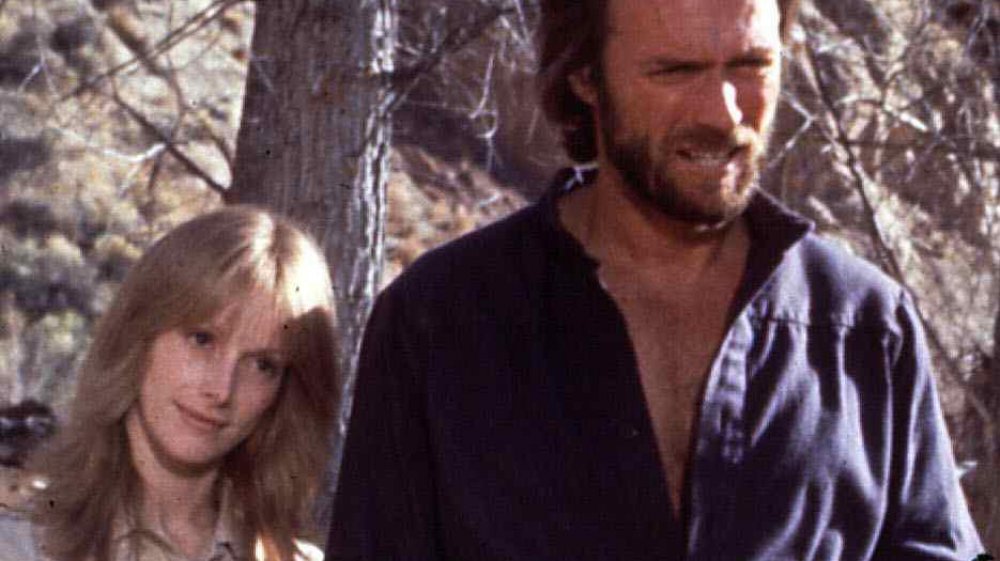
During her relationship with Clint Eastwood, Sondra Locke was married to her childhood friend Gordon Anderson. As The Washington Post noted, Anderson was openly gay; the two were reportedly more like brother and sister than husband and wife. When Locke and Eastwood got together, he was still married to his first wife, Maggie Johnson, who he divorced in 1984.
And when Locke and Eastwood got together, he allegedly established a strict regimen to ensure she didn’t get pregnant. “Clint complained of the IUD – it was uncomfortable for him,” she wrote in The Good, the Bad and the Very Ugly. She went on to say he didn’t like birth control pills, “so he suggested a special clinic at Cedars Hospital where they taught a ‘natural’ method of birth control.” The system was based on the fertility calendar to avoid pregnancy. She recalled, The whole process was awkward and entailed taking my temperature every morning and marking the calendar, etc. It was demanding and ultimately it had failed twice.”
According to People, Locke claimed in her 1989 suit against Eastwood that he told her to get a tubal ligation and have two abortions. (Eastwood “adamantly denies and deeply resents” the allegations.) Already the father of several children, the actor allegedly told Locke he didn’t want any more kids, according to Vanity Fair. All the while, he was having an affair with Jacelyn Reeves and would father two more children, including actor Scott Eastwood.
Friends allegedly turned on Sondra Locke
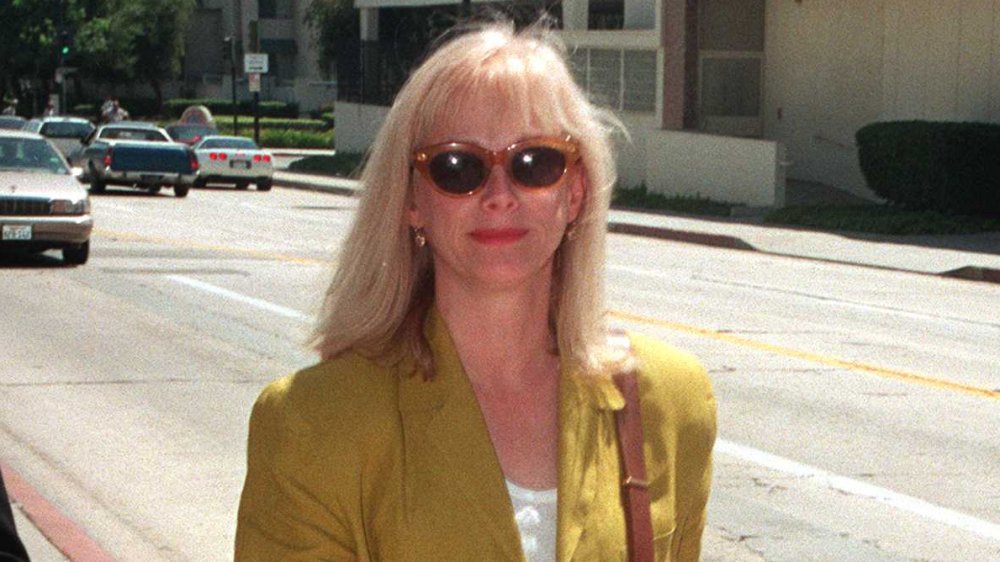
Though she had plenty of personal matters to deal with, Sondra Locke trudged on and completed Impulse, her second film as director. “Some people thought I’d fall apart during the production when the problems with Clint [Eastwood] developed,” she said in the Chicago Tribune in 1990. Locke continued, “They expect that sort of thing to exhaust a woman. It was nice to surprise people.” Sadly, she soon got her own surprise. After the messy split with Eastwood, the director and actor found herself in what appeared to be isolation from the rest of Hollywood. Her opportunities dried up.
“If you were in Clint Eastwood movies, you were in the Clint Eastwood movie business,” she told The Washington Post in 1997. “You weren’t in the movie business. You weren’t part of Hollywood. This became clear early on; people stopped calling.” She even lost contact with many of her friends, like producers Richard and Lili Fini Zanuck, as well as Arnold Schwarzenegger and Maria Shriver. In her memoir, Locke recalls confronting one-time friend Shriver at a social event. “After all this, we can at least be honest,” she told the former first lady of California (via Wand’rin’ Star). “We are no longer friends and can’t act as if we are. I’m hurt and I can’t act as if I’m not.”
Clint Eastwood and Sandra Locke went to court
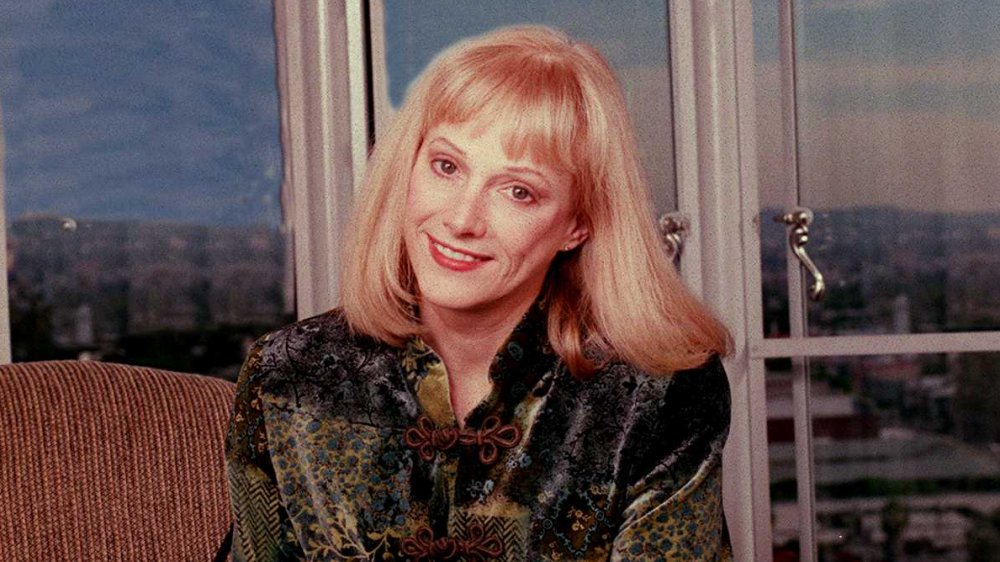
While battling Clint Eastwood in 1989 in a multi-million dollar palimony suit, Sondra Locke received an offer of reconciliation. According to the Los Angeles Times, Locke dropped her case when Eastwood offered to secure her a $1.5-million development deal with Warner Bros. studio. The outlet also reported that court records stated Eastwood paid her $450,000 and handed over the title to a home that was worth over half a million dollars.
However, Locke and her team of lawyers believed Eastwood never intended to follow through on the development deal. In the ’90s, Locke sued Eastwood again, this time for fraud. Per the aforementioned Los Angeles Times report, her attorney, Peggy Garrity, said to jurors, “This deal with Warner Bros. was a sham. It was not real. This contract was a way for Mr. Eastwood to get out of the previous lawsuit cheaply. It was entered into merely in order for Warner Bros. to accommodate Clint Eastwood.”
Between 1990 and 1993, Locke pitched 30 films to the studio, and each one of them was denied. According to the Los Angeles Times, one of the rejected titles was called Oh Baby, which was later renamed Junior and given to Ivan Reitman and Arnold Schwarzenegger. Eastwood admitted that he, not the studio, financed the development deal, though he denied any intentional wrongdoing.
Sandra Locke was warned against penning a memoir
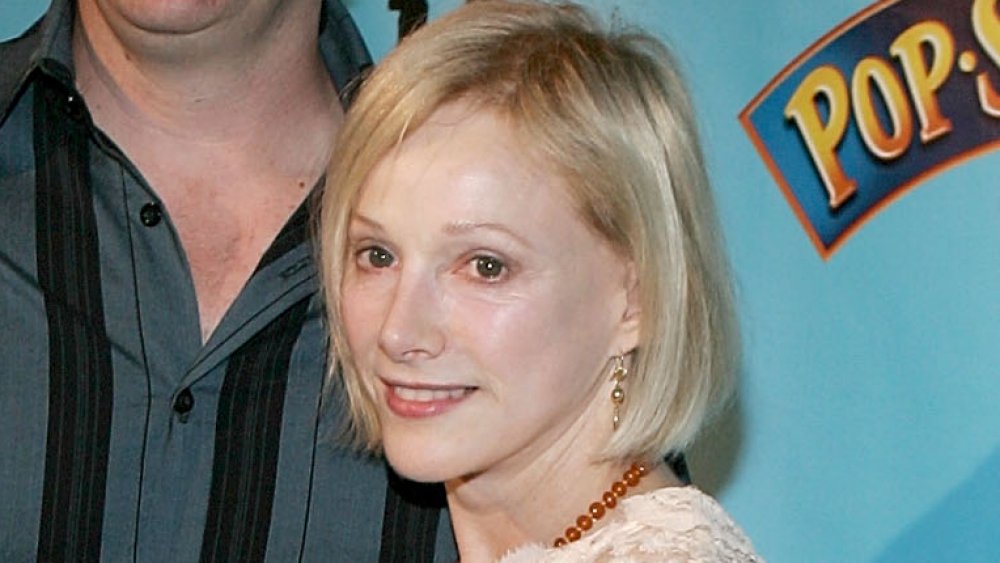
After her struggles in court ended, Sondra Locke began penning her autobiography, The Good, the Bad, and the Very Ugly. Released in 1997, the book provided many details about Locke’s life, including some stories about Clint Eastwood and the movie industry. She told Wand’rin’ Star that she pitched the book to the William Morris Agency, who represented both her and Eastwood. Not only did they turn Locke down, but they advised her to back off from the book. The agency warned that “they will destroy” her, to which she replied, “They have already done that.”
As she expected, when the book was released, Locke was met with resistance. “I was shut out of most venues to promote the book, in particular the networks,” she explained to Wand’rin’ Star. “I was told by my publisher that Oprah Winfrey wanted me to come on her show. As it was being scheduled, I was suddenly cancelled and Clint was set to appear on the show instead. At that time, and even rarely today, Clint had almost never appeared on such a talk show.”
It didn’t stop there. Locke told Wand’rin’ Star that when The Advocate was preparing an article on her book, she was bumped for an Eastwood cover story. She also claimed that some positive reviews from the Los Angeles Times and Entertainment Weekly were either edited to remove any reference to her book or replaced with bad reviews.
Misogyny in the industry challenged Sondra Locke
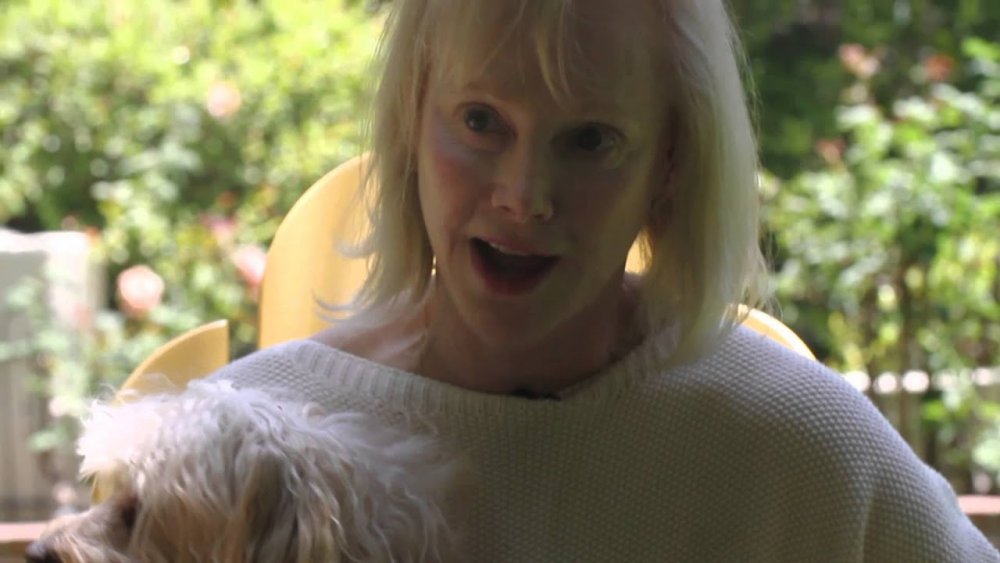
Making a career in Hollywood was a challenge for Sondra Locke. She had the talent, but it seemed that the system was determined to keep her down. In her early acting days, the world put her looks first, and her acting chops second. A review of The Gauntlet in The New York Times, for example, stated, “Miss Locke is not only pretty, but also occasionally genuinely funny.” Even though she made her Hollywood debut with an Oscar-nominated performance, filmmakers and casting agents apparently weren’t knocking down her door for the chance to work with her. “There were no real ‘youth market’ films as there are today,” she said to Wand’rin’ Star. “The leading lady roles in screenplays were written for actress older than I.”
When she transitioned into directing, the journey didn’t get any easier, though she did stand out more. According to the Los Angeles Times, with Impulse, Locke was just one of 11 female directors who released a film in 1990. “Right now, the biggest problem facing a woman director is getting the chance to do a good script,” she told the Chicago Tribune. “When the studios find a good script, they naturally want to give it to the top rank of directors, which is a male club. Women directors need to get that kind of respect.”
Illness befell Sondra Locke
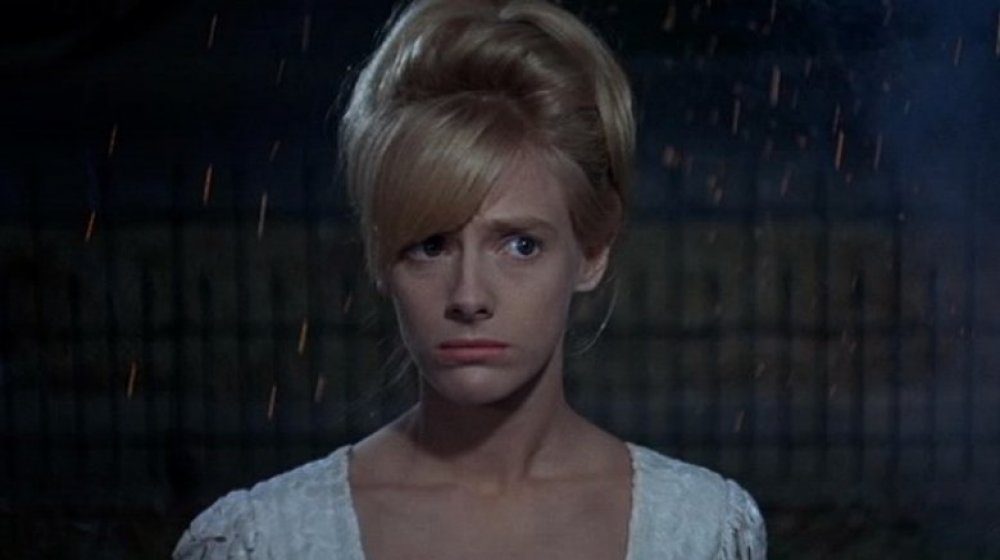
In the midst of one of the ugly court battles opposite Clint Eastwood, Sondra Locke was dealt an even worse hand. According to The New York Times, she was diagnosed with breast cancer in the late ’80s and underwent a double mastectomy and chemotherapy for treatment. “I began to feel beaten, and then getting sick crystallized everything,” she said. “The reality was that this man was apparently all powerful. What was more important for me was to get my career going again than to continue this hideous battle for more money.”
According to Locke, it was partly because of her illness that she accepted the aforementioned dubious development deal in the first place. “Finally sick and exhausted and depressed, I offered to give up my home in exchange for the WB [Warner Bros.] deal to direct — just so I could work and get on with my life as by then I was diagnosed with cancer,” she said to Wand’rin’ Star. “It seemed that he wanted to crush me for no reason other than I had not simply disappeared when he wanted me to.”
On Nov. 3, 2018, the Associated Press reported Locke ԁıеԁ at the age of 74 of cardiac arrest linked to bone and breast cancer.
Sondra Locke’s legacy deserves more attention
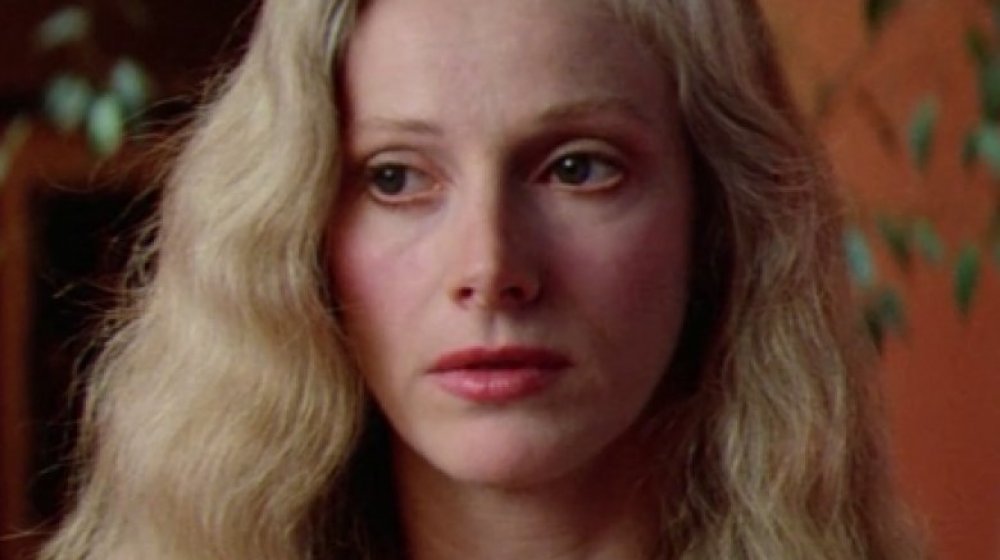
It seems clear that Sondra Locke never got to live the life or the career that she wanted or deserved. Yet, she still managed to build an impressive resume. Sadly, a large portion of her legacy is overshadowed by Clint Eastwood’s presence. When The Hollywood Reporter originally wrote about Locke after her ԁеаtһ, the piece was framed around her being Eastwood’s “embittered ex,” according to The Mary Sue. After some pushback, they changed the piece.
As a result of Eastwood’s dominant presence, Locke was pushed to the sidelines and interest in her achievements was either muted or thwarted entirely. Few publications have managed to do what Mary Sue, The Wrap, and Jezebel have done, which is capture the impact that Locke had. This is, after all, a woman who fought publicly against powerful men and a ѕехıѕt industry in the ’90s, setting the stage for many who would follow in her footsteps in the current Me Too movement.
“It was about my fighting for my professional rights,” Locke said to the Los Angeles Times at the time. “People cannot get away with whatever they want to, just because they’re powerful.” Her lawyer, Peggy Garrity, predicted her client’s influence. “It was about power and the arrogance of power,” she said. “I see her as sort of an Everywoman for the ’90s.”
You may like
Clint Eastwood
Mystic River: Why Clint Eastwood’s Best Movie Still Holds Up Today

A filmmaker of Clint Eastwood‘s caliber is going to have a filmography full of gems. Primarily known for his work in Westerns, biopics, and military dramas, every so often, Eastwood steps outside his comfort zone and delivers in a genre that would seem completely unexpected on paper. That happened in 2003 with Mystic River, a neo-noir murder mystery drama that seems a bit forgotten or overlooked, even though it was a financial success and earned six Academy Award nominations. It represents Eastwood at his very best, breathing vivid life into complex characters as he examines a plethora of themes that range from loyalty, friendship, revenge, and, ultimately, forgiveness.

Mystic River is based on the 2001 novel of the same name by Dennis Lehane, and it follows the lives of three childhood friends, Jimmy Markum (Sean Penn), Sean Devine (Kevin Bacon), and Dave Boyle (Tim Robbins), living in Charlestown, Boston in 1975. Dave is kidnapped by two men claiming to be police officers, and he’s sexually abused by them over a four-day period until he escapes. The traumatic event shapes the three friends, and they ultimately lead very different lives twenty-five years later.
Jimmy is an ex-con that now owns a convenience store in the neighborhood, Sean works for the Massachusetts State Police as a detective, and Dave is your everyday blue-collar worker that still lives with the trauma of being abducted and raped. Their lives are forced together once again through tragedy when Jimmy’s daughter Katie (Emmy Rossum) is found murdered, and friendship is tested when all signs point to Dave being the murderer.
Mystic River Is a Departure From Clint Eastwood’s Other Work
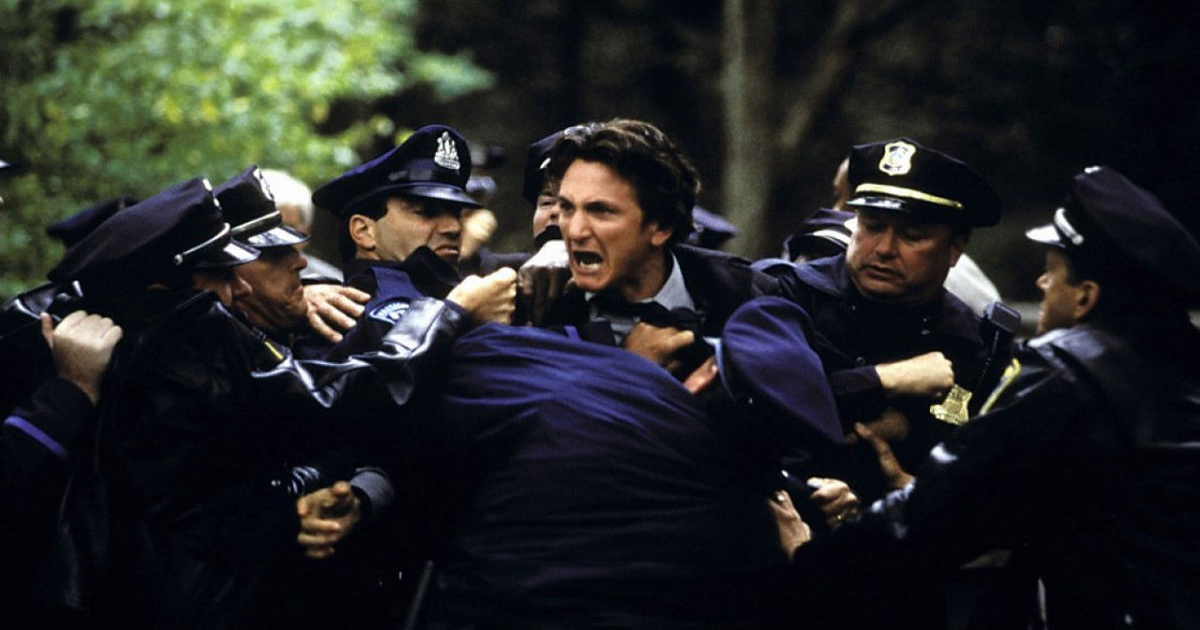
Eastwood tackles the material in Mystic River with a sure and confident hand. It also represents a unique departure from some of his other films. Much of the action takes place under the cover of darkness, and Eastwood is able to find beauty in that darkness. The filmmaker focuses on a character’s eyes or the gleam of a weapon, for instance, as darkness permeates most of the scene.
For the scenes that take place during the day, the filmmaker opts for tight close-ups that linger over the emotions of his impressive cast. There is something uncomfortably intimate about Mystic River, and that has much to do with the subject matter. None of this story is particularly easy to digest, and Eastwood adds to that discomfort with his choices to frame scenes in such a way that’s almost intrusive. The audience feels a growing sense of dread and tension as more of the story unfolds.
Using Lehane’s novel and Brian Helgeland’s screenplay as a blueprint, Eastwood profoundly explores generational trauma and how the sins of the past can leave a permanent mark on our present. Even though the abuse only happened to Dave, the effects of the event leave a mark on all three friends, with Dave being the primary victim and the others feeling a sense of survivor’s guilt for not being subjected to it themselves.
The ordeal forever changes their union because they’re never quite able to look at each other the same way again, as each friend deals with the trauma differently. Jimmy is stunned by the act of abuse but can’t give Dave the support he needs, which then bleeds into their present when Jimmy begins to suspect that Dave had something to do with his daughter’s murder. He doesn’t want to consider that his friend would do something like this because of the trauma he endured as a child, but as evidence mounts against him, Jimmy has to decide if friendship and loyalty overshadow his need for vigilante justice. The story is rich with so many complexities that make it some of Eastwood’s most compelling work as a filmmaker.
Eastwood also takes his time with the story and lets it unfold as it should. Mystic River is very nuanced, and he knows he’s dealing with heartbreaking subject matter that requires patience and respect. The story is grounded in so much reality that Eastwood seems keenly aware that a viewer might be an actual victim of this kind of abuse themselves, so he delicately approaches the topic and gives it the emotional weight it deserves.
He also shows the uncomfortable side of abuse where the victim, unfortunately, can be shamed because of the event. Dave becomes an outsider later in his life, even with his close friends, something that sadly comes along with this kind of trauma. Eastwood approaches all of this responsibly and provides a very balanced outlook to all the events transpiring on screen.
Mystic River has become known for its powerhouse performances, and Eastwood pulls the very best from his ensemble cast. While the scenes with the young actors are brief in the beginning, they set the tone of who these people will be twenty-five years later. Dave becomes the outcast because of the event; Jimmy lacks empathy and doesn’t trust authority, while Sean becomes the grounded one of the bunch and a police officer in an attempt to prevent a tragedy like this from ever happening again.
Clint Eastwood Pulls Powerhouse Performances From His Cast
Tim Robbins, Sean Penn, and Kevin Bacon do a great job conveying the unspoken tension between all three of these characters. There is a sense of loyalty, but so much has taken place over the years that it has forced them all to lead very different lives. As a group, they are uniformly excellent. You feel the history between the characters and the bonds that were broken, only to be reopened by a new traumatic event.
On their own, Penn gives the performance of a lifetime as Jimmy, and it’s not a shock that this turn finally earned him his first Academy Award for Best Actor. Penn is a dominant presence in all of his scenes, and there is a sense of uncertainty whenever he’s around because you don’t know exactly what move he will make.
That’s not to say he doesn’t display layers. All of that bravado is broken once he finds out his daughter is murdered. It’s hard to pinpoint a director’s best scene on film, but what Eastwood pulls out of Penn during the “Is that my daughter?” sequence represents some of his very best work as a filmmaker.
Robbins also received an Academy Award for Best Supporting Actor for his work here, representing a much-deserved win. As Dave, Robbins is the tragic and emotional heart of the story. The viewer feels instant empathy for Dave due to what he went through as a child, but you’re also left questioning everything when it seems like Dave could be the one who murdered Katie.
Robbins keeps you on your toes throughout, making you question his innocence while also seeing the tenderness in him as he interacts with his own child, who is just about the age he was when he was abused. As for Bacon, of the three male leads, he gives the most subdued performance, but it suits the character. He’s trying to make everything right and keep it all together. It’s a subtle performance that carries its own emotional weight.
Eastwood also makes the supporting roles worthy of attention. Marcia Gay Harding, as Dave’s wife Celeste, puts in powerful work here that earned her a Best Supporting Actress Oscar nomination, while Laura Linney more than holds her own with Penn as his second wife, Annabeth. In addition, Laurence Fishburne also fills in as Sgt. Whitey Powers in another excellent part.
Mystic River is a haunting and poetic motion picture that showcases a director laying it all out on the table. Eastwood gives the audience everything he has as a director and pours it out across the screen in a film that is just as powerful twenty years after its initial release.
Clint Eastwood
Clint Eastwood’s Most Iconic Non-Western Role Was Only Possible Because Of This Actor

SUMMARY
Clint Eastwood’s role in Dirty Harry is considered one of his most iconic, and the film is a classic in the crime genre.
Paul Newman initially turned down the role of Harry Callahan in Dirty Harry but recommended Clint Eastwood for the part.
Newman declined the role due to his liberal beliefs, and Eastwood’s portrayal of Callahan differed from Newman’s perspective, but both respected each other.
SCREENRANT VIDEO OF THE DAY

Although Clint Eastwood first built his impressive career on Western movies like The Man with No Name franchise and The Outlaw Josey Wales, the actor’s biggest non-Western role in Dirty Harry is one of his most iconic, and it might have never happened without this one actor. Clint Eastwood began acting in the 1950s, and over several decades, became a staple in the Western genre. What makes Eastwood stand out is the fact that he has not only appeared in countless films, but has also directed them himself. Films like Unforgiven and Gran Torino have defined his career. However, Dirty Harry is by far one of Clint Eastwood’s best films.
In 1971, Clint Eastwood starred in the neo-noir action film Dirty Harry. The film, and its adjoining sequels, follow Inspector “Dirty” Harry Callahan, a rugged detective that is on a hunt for a psychopathic serial killer named Scorpio. The Dirty Harry franchise lasted from 1971 to 1988, and has since been considered a classic. In fact, Dirty Harry was selected for preservation in the United States National Film Registry by the Library of Congress because of its cultural significance. However, this film might have been vastly different if Clint Eastwood had never been in it, and scarily enough, this definitely could have happened back in 1971.
Paul Newman Rejected Dirty Harry Before Suggesting Clint Eastwood For The Role
Dirty Harry went through many production challenges before it was actually made, and one of those included casting the iconic detective. In the film’s early stages, the role was offered to actors such as John Wayne, Robert Mitchum, Steve McQueen, and Burt Lancaster. However, for various reasons, including the violence that permeates the film, these actors all declined. For a time, Frank Sinatra was attached to the project, but he also eventually left the production. In reality, Clint Eastwood wasn’t even in the cards for portraying Dirty Harry, but his big break came when Paul Newman was offered and declined the role.
Paul Newman, like many amazing actors before him, was offered the role of Harry Callahan, but ultimately said no. However, what makes his refusal stand out among the rest is that he recommended another actor that could be perfect for the role: Clint Eastwood. At this time, Eastwood was in post-production for his first film Play Misty for Me, meaning his career was taking something of a turn. Also, unlike his predecessors, Eastwood joined up with Dirty Harry, just as Newman thought he would. Because of his Western roots, the violence and aggression that made up Dirty Harry didn’t bother Eastwood at all.
Why Paul Newman Turned Down Dirty Harry
Paul Newman turning down the leading role in Dirty Harry may not seem too surprising considering the host of other actors that also declined the movie, but Newman definitely had his reasons. While previous actors had condemned the movie for its incredible violence and themes of “the ends justify the means,” Newman refused to take the role because of his political beliefs. Since Harry Callahan was a renegade cop, intent on catching a serial killer no matter the cost or the rules that would be broken, Newman saw this character as too right-wing for his own liberal beliefs.
Paul Newman was an outspoken liberal during his life. He was open about his beliefs, so much so that he even made it onto Richard Nixon’s enemies list due to his opposition of the Vietnam War. Other issues that Newman spoke out for included gay rights and same-sex marriage, the decrease in production and use of nuclear weapons, and global warming. As a result of his politics, Newman quickly denied the role of Harry Callahan. In an interview with Entertainment Weekly as reported by Far Out Magazine, Clint Eastwood commented that he didn’t view Callahan in the way Newman did, but still respected him as an actor and a man.
Would Dirty Harry Have Been So Successful Without Clint Eastwood?
Ultimately, it’s hard to say whether Dirty Harry would have been successful without Clint Eastwood. Arguably, any big-time actor could have made the film succeed solely based on their fame. However, one aspect of Dirty Harry and its carousel of actors is that the movie had various scripts, all with different plots. So, if Dirty Harry had been in a different location with a different serial killer and a different lead actor, there’s a chance it wouldn’t have been nearly as successful. In the end, Dirty Harry is a signature for Clint Eastwood, and most likely, audiences are lucky that it was made the way it was.
Clint Eastwood
The story of how Clint Eastwood prevented Ron Howard from embarrassment

A star of American cinema both in front of and behind the camera, Ron Howard is often forgotten when recalling the greatest directors of modern cinema, yet his contributions to the art form remain unmatched. Working with the likes of Tom Hanks, Chris Hemsworth, Russell Crowe and John Wayne, Howard has brought such classics as Apollo 13, A Beautiful Mind and Rush to the big screen.
Entering the industry in the late 1950s and 1960s, Howard started his career as an actor, making a name for himself in shows like Just Dennis and The Andy Griffith Show before his role in 1970s Happy Days would catapult him to national acclaim. His directorial debut would come at a similar time, helming 1977’s Grand Theft Auto, the ropey first movie in a filmography that would later become known for its abundance of quality.
Known for his acting talents, Howard wouldn’t become a fully-fledged director in the eyes of the general public until the 1980s, when he worked with Tom Hanks on 1984’s Splash and George Lucas for the 1988 cult favourite Willow.
With hopes of becoming the new Star Wars, Willow was instead a peculiar fantasy tale that told the story of a young farmer who is chosen to undertake the challenge to protect a magical baby from an evil queen. Starring the likes of Warwick Davis, Val Kilmer and Joanne Whalley, the film failed to make a considerable dent in pop culture at the time, largely being ridiculed by critics and audiences alike.
Screened at the Cannes Film Festival, the movie was spared humiliation by none other than Clint Eastwood, who saw the craftsmanship behind the picture, as described by Ron’s daughter, Bryce Dallas Howard.
Speaking to Daily Mail, the actor recalled: “My dad made a film called Willow when he was a young filmmaker, which screened at the Cannes Film Festival and people were booing afterwards. It was obviously so painful for him, and Clint, who he didn’t know at that time, stood up and gave him a standing ovation and then everyone else stood up because Clint did”.
Dallas Howard, who worked with Eastwood on the 2010 movie Hereafter, became very fond of Eastwood as a result, looking up to him as an exemplary Hollywood talent. “Clint puts himself out there for people,” she added, “As a director he is very cool, very relaxed, there’s no yelling ‘action’ or ‘cut’. He just says: ‘You know when you’re ready.’ I told my dad he should do that!”.
Take a look at the trailer for Howard’s 1988 fantasy flick below.
Trending
-

 Entertainment10 months ago
Entertainment10 months agoJohn Wayne’s son speaks on military service, Hollywood life and his dad, ‘The Duke’ – My Blog
-

 Entertainment10 months ago
Entertainment10 months ago40 Legendary John Wayne Quotes – My Blog
-

 Entertainment11 months ago
Entertainment11 months agoNew biography reveals the real John Wayne – My Blog
-

 Entertainment1 year ago
Entertainment1 year agoWhy one POPULAR ACTOR was FIRED from THE SONS OF KATIE ELDER and lost his career as a result! – Old western – My Blog
-

 Entertainment10 months ago
Entertainment10 months agoHow Maureen O’Hara Broke Her Hand During Iconic Scene With John Wayne – My Blog
-

 Entertainment11 months ago
Entertainment11 months agoRio Lobo (1970) marked the last collaboration between John Wayne and Howard Hawks. – My Blog
-

 Entertainment11 months ago
Entertainment11 months agoDid John Wayne really have a good time filming 1972’s The Cowboys? – My Blog
-

 Entertainment10 months ago
Entertainment10 months agoJohn Wayne and the ‘Bonanza’ Cast Appeared in This Epic Coors Light Commercial – My Blog

